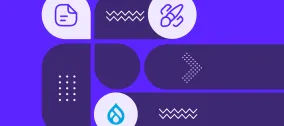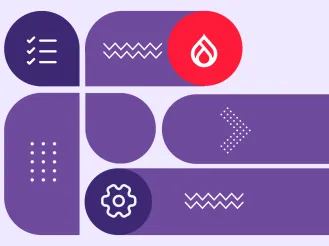3 Critical Components of a Successful RFP Process in Web Design & Development
The Request for Proposal (RFP), is an intricate process that can take months and in some cases, years, of meticulous details and hardships from a team aspiring to overcome dated technology, designs and infrastructure. In the excitement of finally being able source a web design agency, it can be easy to rush the actual RFP document, including the process. Or, worse yet, having it controlled by a separate group who is not affiliated with the project beyond the purchasing process.
- What makes for a good RFP? How do we make sure we choose the right agency partner?
- How do we involve our team so that we get internal buy in?
- How do we ensure we’ll stay within our budget and deliver on time?
A lot hinges around RFPs and selecting the right partner. The RFP and the process for managing it will go a long way in determining your organization's success.
Let’s review three important components necessary to build a successful RFP process.
1. Disclosing RFP Budgets
One of the biggest mistakes we see is limited transparency throughout the RFP process especially around budget - a critical disclosure element within a successful RFP process. At ImageX, one of the more common reasons we come across for not disclosing the budget in the RFP is that the the client wants the market to dictate the price, and that if a number is disclosed all of the proposals will come in at that number.
Full transparency removes the guesswork
By removing the guesswork we can focus on the solutions. By not disclosing the budget puts the bidding agencies in a difficult position; requirements in an RFP will almost always be “high level;” enough detail to give you an idea, but not detailed enough to allow you to write development requirements (which is what is required to give a firm estimate). The agency must make a choice; do they assume the “best case scenario” and estimate assuming the most optimistic set of circumstances or do they account for the unknown through more conservative estimates?
When you open the RFP to enough vendors, you’ll likely see examples of both approaches, and it will be tempting to go with the lower bids. Keep in mind, almost all contracts are “Time & Material,” meaning you will be invoiced for the actual amount of effort it takes, regardless of what the original estimate was. Here’s a few recommendations to ensure a transparent RFP:
- Include more details within RFPs. More detail in the RFP = stronger RFP responses. Outliers, both on the low and high ends of the budget spectrum will be easier to identify if you have more thorough requirements in the RFP, as the responses will be more thorough. There is nothing worse than choosing the winning bid based on an expectation of cost and having the project finish with a drastically higher price.
- Identify which requirements are “must haves” vs. “nice to have.” Again, the more detail the better but this will allow the bidding agencies to show you how the project will be broken up and which requirements require more effort, allowing you to pick the ideal mix of features and functions.
- Give a budget range. This allows the agency to tell you what they can give you on the low-end vs. the high-end, and it can also give you another means for evaluating the responses. Where is the agency placing the most value, ie. what are they stripping out for the low-end response? This may help you identify which agencies have the best grasp for the project and its priorities.

2. Meeting with Interested Web Design Agencies
Another common mistake we see with RFP’s is the organization either unwilling or not allowed to meet with the agencies interested in bidding on the project. Formal procurement processes sometimes do not allow this to avoid any potential favoritism of vendor selection, and sometimes organizations do not want to have to meet dozens of agencies all asking similar questions.
The challenge with this approach is it doesn’t allow for either the organization or the agency to get to know each other; going back to our original statement that the partnership is more like a relationship than anything else, this is somewhat equivalent to an arranged marriage. There are a number of material advantages to meeting with agencies interested in bidding on your project:
- Get to know the personalities. You’ll be working with this team of people everyday for the foreseeable future, and sometimes personalities conflict. If all else is equal between 2-3 finalists, wouldn’t it be great to know who you get along best with to make the final decision?
- A better understanding of the RFP requirements = more accurate estimates. Having a Solution Architect review your requirements allows them to understand the logic behind them. Technology, and in particular Drupal, is extremely customizable. The time spent reviewing the requirements will produce better proposals, more accurate estimates and ultimately, a more informed selection of the agency partner.
- Get first-hand experience into your potential vendors competencies. By reviewing the proposal with the agency gives you a glimpse into their competencies, communication and project approach. Listening to how they constructed the solution they did, what logic was applied, what assumptions were made, how they communicate and who worked on it will be a good representative sample of how it will be working with that agency. The best proposal writers doesn’t necessarily equal the best delivery (although there is a strong correlation).
Ultimately, some organizations will not have the opportunity to engage with bidding agencies due to procurement processes. There are two ways we’ve found to obtain some of the intangibles outlined above in environments with strict buying processes:
- Question periods to clarify and evaluate
- Meet with at least 3 - 5 of your top vendor finalists
Question periods to clarify and evaluate
A question period is the only way a bidding vendor can dig deeper on the requirements to provide better responses and estimates, but often you can get a sense of the vendor by the questions they ask (or don’t ask). Did the questions seek to clarify, or did they challenge, in a positive way, your desired approach? Are the questions trying to point you in a different direction you may not have considered? If so, chances are this agency may have a better way of meeting your goals.
Meet with 3 - 5 of your top vendor finalists.
You’ve narrowed down your selection out of the dozens or perhaps even hundreds of proposals. The procurement team has done their job and ensured that a fair and level buying process was adhered to. Hopefully, the RFP has been constructed in such a way where the best agencies for the job are clear, and you are not choosing just based the lowest bid.
Now is your time to meet each and there is a lot more to learn from these meetings. Here are a few approaches that can really help spot the differentiators between the finalists:
- Request to meet the team members assigned to your project and their work experience with similar clients/projects.
- Outline your top 3 project goals and/or challenges, and ask for case studies on how they have helped organizations with similar challenges accomplish those goals.
- Ask the agency to present their process. Many agencies, to win a deal, will come into a presentation with a slick design mockup to showcase talent; however, chances are, every finalist you’ve selected has talent and likely a good portfolio which you’ve already referenced. Instead, ask them to outline their process in key areas of the project, such as design and development and make sure that is a process you are comfortable.
For example, if you want a strict adherence to the project scope once the development starts, you’ll want an agency that utilizes a Waterfall approach to development vs. an Agile process. Similarly with design, a beautifully designed website is irrelevant if the business goals are not accomplished. What data and process does the agency apply to come with a design they are confident will meet the website goals (conversion)?

3. Approaching the Market with Your RFP
Once you’ve drafted your RFP, and assuming you don’t have an incumbent agency already selected, the next step will be sharing it with the marketplace. There are generally three approaches to this process:
- Open process, whereby you put the RFP on a syndication service that thousands of agencies will see. This is typically done where the process is managed by a procurement team, and a large number of responses are desired.
- Closed process, whereby a select number of agencies are requested to bid on the project. This is typically done when an organization has selected the very specific criteria they want in a partner and have found a small number of potential partners that have those characteristics.
- Hybrid process, whereby the RFP is publicly announced on the organization's website and selected agencies are targeted. This allows you to consider submissions that meet your criteria that you may not have otherwise known about.
The way you distribute the RFP should be aligned with how you want to manage the process; for example, publically announcing the RFP on a syndication service while agreeing to meet with every agency that responds would be a massive time commitment (it’s not uncommon to receive more than 100 proposals with this approach).
Conversely a closed process run by a procurement team that will not meet with the responding agencies will likely not provide you with the depth of response you are looking for. In the end, there is no right or wrong, only what is right or wrong for your organization.
Final Thoughts
When procuring a web design and development vendor, the RFP process can be hard and painstaking. As Drupal development experts, we’ve had success implementing the strategies and recommendations shared above to streamline our process and provide clients with a better RFP experience.








